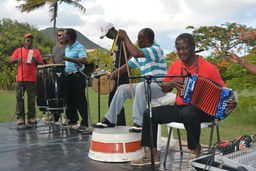

.png)

WHAT IS ICH?
Intangible Cultural Heritage
Intangible cultural heritage (ICH) involves social customs, traditions,
rituals, representations, expressions, particular knowledge of nature
and craft skills that communities and groups recognize as a form of
cultural heritage (derived from the description in the UNESCO
Convention). It is passed on from generation to generation and from
person to person.
The term ‘cultural heritage’ has changed content considerably in recent decades,
partially owing to the instruments developed by UNESCO. Cultural heritage does
not end at monuments and collections of objects. It also includes traditions or living
expressions inherited from our ancestors and passed on to our descendants, such as
oral traditions, including language as a vehicle for ICH; performing
arts; social practices, rituals, festive events; knowledge and practices
concerning nature and the universe; or the knowledge and skills to
While fragile, intangible cultural heritage is an important factor in maintaining cultural
diversity in the face of growing globalization. An understanding of the intangible cultural
heritage of different communities helps with intercultural dialogue, and encourages
mutual respect for other ways of life.
The importance of intangible cultural heritage is not the cultural manifestation itself but
rather the wealth of knowledge and skills that is transmitted through it from one generation
to the next. The social and economic value of this transmission of knowledge is relevant for
minority groups and for mainstream social groups within a State, and is as important for
developing states as for developed ones.
"Remembering and Safeguarding Sint Maarten's Culture"
INTANGIBLE CULTURAL
HERITAGE
Traditional, contemporary and living at the same time: intangible cultural
heritage does not only represent inherited traditions from the past but also
contemporary rural and urban practices in which diverse cultural groups
take part;
Inclusive: we may share expressions of intangible cultural heritage that are similar to those
practiced by others. Whether they are from the neighboring village, from a city on the
opposite side of the world, or have been adapted by peoples who have migrated and settled
in a different region, they all are intangible cultural heritage: they have been passed from one
generation to another, have evolved in response to their environments and they contribute to
giving us a sense of identity and continuity, providing a link from our past, through the present,
and into our future. Intangible cultural heritage does not give rise to questions of
whether or not certain practices are specific to a culture. It contributes to
social cohesion, encouraging a sense of identity and responsibility which
helps individuals to feel part of one or different communities and to feel part
of society at large;
Representative: intangible cultural heritage is not merely valued as a cultural
good, on a comparative basis, for its exclusivity or its exceptional value. It thrives
on its basis in communities and depends on those whose knowledge of traditions, skills and
customs are passed on to the rest of the community, from generation to generation, or to other
communities;
Community-based: intangible cultural heritage can only be heritage when it is
recognized as such by the communities, groups or individuals that create, maintain and transmit
it – without their recognition, nobody else can decide for them that a given expression or practice is
their heritage.
"Remembering and Safeguarding Sint Maarten's Culture"

HOW DOES ICH SAFEGUARD
ST. MAARTEN'S CULTURE?
Sint Maarten endorsed the Convention for the Safeguarding of the Intangible Cultural Heritage (ICH)
on May 21, 2014. The Sint Maarten National Commission (NATCOM) for UNESCO, and the
Department of Culture, with other selected representatives in the community, participated in ICH
trainings throughout the Dutch Caribbean and Suriname. Numerous consultations were held with:
• Knowledge Bearers • Cultural Practitioners • Heritage Experts • Culture-Creative Professionals
The national inventory list, as defined by the UNESCO ICH convention, is used as a resource tool for
teachers, students, and anyone seeking accurate history and cultural customs of Sint Maarten. The five
domains are broken down into the following topics:
1) Oral Traditions and Expressions Including Language as a Vehicle for ICH;
(2) Performing Arts;
(3) Social Practices, Rituals and Festive Events;
(4) Knowledge
and Practices Concerning Nature and the Universe; and
(5) Traditional Craftsmanship.
Download the database, broken down into the 5 Domains, and more, here.
"Remembering and Safeguarding Sint Maarten's Culture"
ABOUT IRICH
IRICH stands for, I Remember Intangible Cultural Heritage. A project created by the Sint Maarten National Commission for UNESCO and the Department of Culture. The objective is to educate the community about Intangible Cultural Heritage (ICH), and create a home for the culture of the Sint Maarten
people to access, use and share.
This website will act as a vehicle for the distribution of Sint Maarten's Intangible Cultural Heritage (ICH). This resource is a database of information regarding various aspects of the culture of Sint Maarten, is free, and
intended for educational purposes.
























